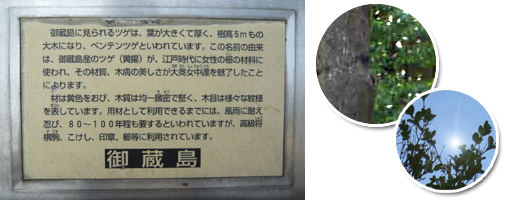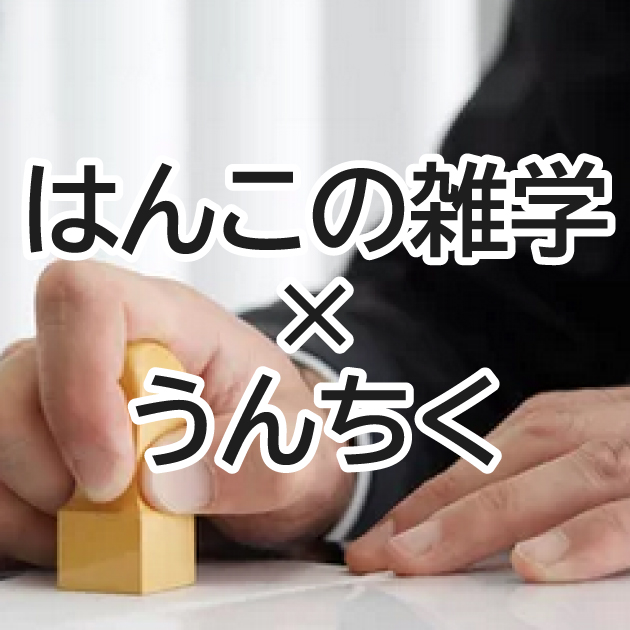Japan's oldest gold seal?
A gold seal is a seal made of gold. In ancient China, it is said that kings, feudal lords, and imperial masters owned them.
Japan's oldest gold seal, discovered on Shikajima in Higashi Ward, Fukuoka City, is called the ``Kan-Wa-no-Nakoku King Seal.''
It is said that the seal of ``King of the Han Dynasty'' was given to the King of Nu, Shushu, by Emperor Guangwu of the Later Han Dynasty in 57 AD.
It is engraved with the words ``Kan no Wan no Kokuou.''

The beginning of vermilion
Vermilion ink pad. It is said that vermilion meat was invented during the Song Dynasty in China. Before that, it seems that mud was used, and the other name for vermilion ink is mud, which seems to have come from this origin. In ancient China, vermilion was a symbol of nobility. It also has other meanings such as ``congratulations.''
What about sealing?
Have you ever seen an unreadable kanji HANKO stamped on the back of an envelope? What does it mean?
Apparently, it is often written in a font called Gyosho and has the word ``kan'' stamped on it.
This seems to mean ``opening is prohibited except by the person in charge.''
It seems to mean ``seal'', which is used to close letters and documents, and ``tan'', which is used to seal letters and documents (or written characters).

kao seal
Although it is called kaou, it is not pressed flowers. This is a symbol written in ancient documents to prove that it was issued by oneself. Originally, it was a substitute for the signature, but after the Kamakura period, it was often written below the signature. From around the Muromachi period, seals also appeared. The origin of kao lies in the cursive handwriting of the signature. By the way, the character ``oshi'' means to sign, and in other words, it means ``something beautifully signed.''

Bententsuge from Tokyo?
Tsuge (Japanese boxwood: Boxwood family) is famous in Satsuma (present-day western part of Kagoshima prefecture), but what a surprise! Trees are also being felled on Mikura Island in Tokyo. The Japanese boxwood found on Mikurajima has large, thick leaves and can grow up to 5 meters in height, and is called the boxwood tree. The origin of this name is said to come from the fact that when Japanese pine from Mikurashima Island was used as a material for women's combs during the Edo period, the beauty of the material and the beauty of the wood captivated the ladies of the inner palace. Masu.
It seems that the dense, hard, and glossy tsugi has been loved for a long time.
By the way, the hontsuge Hanko Shop 21 is the Satsuma hontsuge from Kagoshima Prefecture, which I mentioned at the beginning.

What kind of seal is a seal?
Rakkan-in is an elegant stamp that is stamped on New Year's cards, calligraphy, hanging scrolls, etc.
The term ``signature'' is an abbreviation for ``rakuseikanshi,'' which refers to the act of recording the creation date and author's name when a work of calligraphy or painting is completed. The stamp itself is sometimes called a seal.
In calligraphy and paintings, the location where the seal is affixed also has its own meaning.
Also, one of the signature seals, the Gain, is also called the ``Gaya no Seal''. This is a seal with your own imperial name engraved on it, such as on handwritten calligraphy. Tenkoku refers to a seal that is expressed by engraving a seal calligraphy (letters in a seal calligraphy font are engraved on the seal material).
There is also a type of seal called Yuin, which has the meaning of ``a sign of play'' and is carved with a favorite phrase or lucky word instead of using one's own name or name. Yuin is sometimes stamped by writers and others under the seal of calligraphy and paintings.
...There is also a taste to stamping a ``tasteful seal'' on a postcard or New Year's card and giving it as a gift. The signature seal is a product that is loved at our store.
Impressions of bills and stamps?
Did you know that the "imprint" of a stamp is printed on banknotes?
Alright. How should this "imprint" be read?
In fact, the front side of the banknote is stamped with the ``Seal of the Governor'', and the back side is stamped with the ``Hakkenkyokucho'' stamp.
Is it stamped on a paulownia box?
Have you ever seen a small stamp engraved on the paulownia wood boxes of artworks and crafts? In some cases, the box is stamped so that you can tell which is the top and bottom. ``Proof with a famous seal''...Seals are used to prove the author's identity, or to certify the contents of the work or box.
put a stamp on a book collection
"Library" means the possession of books or books. The seals stamped on books to identify their ownership are called zoshoin (zoshoin). It is generally stamped on the first page of the book or on the last page. These books have a wide variety of stamps and shapes. It has a deep history, and there is a theory that unique seal impressions began to be made after books became popular around the Edo period.
It would not be an exaggeration to say that the library seal that looks like an old book represents the history of this book.
“Stamp” and the world?
The "stamp system" was introduced from the West. Even in the Old Testament, there are about 40 references to the system of registered seals and registered seals. Currently, there are four countries in the world that use stamps: Japan, China, Taiwan, and South Korea.In China, only official seals are used. Stamps, which have spread and been passed down throughout the world, have their own unique charm, both in calligraphy and impressions.
An unusual stamp, a rare stamp?
As the name suggests, the ``fudejiku-in'' that existed in the Kamakura period seems to have been stamped by adding vermilion (or ink) to the tip of the brush. The tip of the shaft is not processed and is a normal brush with no markings. Apparently, it served as a "record check" for officials at the time.

 日本語
日本語 English
English 简体中文
简体中文 繁體中文
繁體中文 한국어
한국어 ไทย
ไทย Tiếng Việt
Tiếng Việt Indonesia
Indonesia Français
Français Español
Español Português
Português
